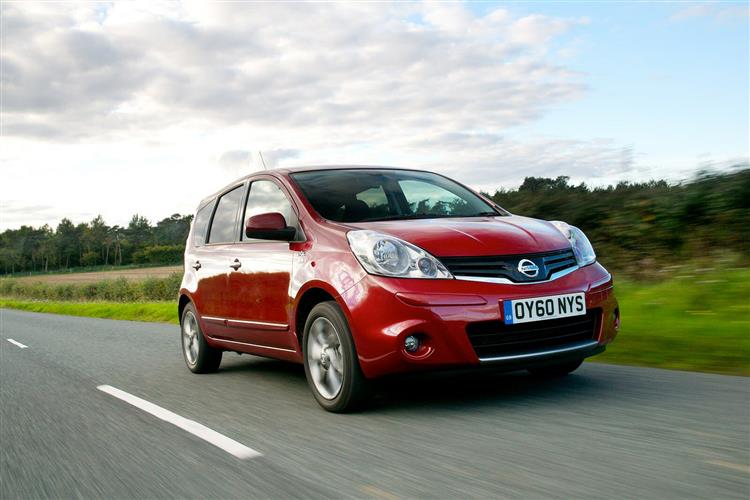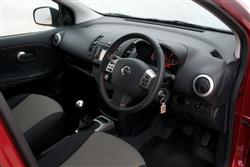NOTE PERFECT (some text hidden) --NONE--
BY ANDY ENRIGHT
Introductionword count: 116
The Nissan Note is one of those cars that doesn't ever elbow its way to front and centre in order to gain attention but owners will attest to the fact that it's a vehicle that just works. There's little that's glamorous, exciting or which will elicit covetous glances from your neighbours but sometimes what you need is something utterly dependable, wholly practical, incredibly easy to drive and which serves to make the business of buying and running a car as painless as possible. The Note is that car and it's why with a relatively low key marketing push it's become one of Nissan's best-selling vehicles in the UK. Here's how to track down a used one.
Modelsword count: 16
Five-door supermini MPV 2009- to 2013: [1.4, 1.6 petrol 1.5 diesel (Visia, Acenta, n-tec, n-tec+, Tekna)]
Historyword count: 202
No, your eyes do not deceive you. We're starting the clock on this used test in 2009, fully three years after the Note was first launched in the UK because the model we're looking at here is the updated car which was launched in mid 2009 and which incorporated a suite of changes not only to the styling but also to equipment provision and also to the efficiency of the powerplants. Revised gear ratios boosted fuel economy and improved emissions of the 1.4 and 1.5dCi models. Further incremental improvements were visited upon the car's emissions for the 2011 model year petrol-engined Notes which became fully compliant with the Euro 5-emissions requirements. The styling changes are the key clue-in that you're looking at one of the facelifted cars. Look for a chrome strip running along the bottom of the front grille beneath the big Nissan badge. You can't rely on the trim levels as the old S, SE and SVE trims were replaced by the more lifestyle trim levels that were being rolled out across the Nissan range back in 2009. In 2013 an all-new Note was displayed at the Geneva Motor Show, bringing a more dynamic looks and feel to the model.
What You Getword count: 418
One interesting but useless nugget of information is that this car was designed by Toyota - Taiji Toyota that is - one of Nissan's most talented stylists. He's done a good job too, managing to avoid the formulaic box-on-wheels shape that afflicts some of the Nissan Note's contemporaries. On paper, this car is roughly equivalent in size to its immediate rivals at just under four metres long, 1.53m high and 1.69m wide. In the metal however, it appears lower and longer with minimal rear overhang and quite a pronounced nose protruding at the front. The facelifted model we're looking at here got a 2009 package of tweaks including a reshaped bumper and bonnet, revised headlights and a shiny black front grille. At the back, compared to the original Note, the tail lights are darker and models with parking sensors got them incorporated more neatly into the bumper. It's on the inside, however, where owners of the original 2006 to 2009 Note model will notice the most significant changes. After that date, all models got better-quality, soft-touch interior plastic and mildly redesigned instrument graphics. As ever, the interior feels very spacious and that's in no small part down to the fact that the wheelbase of 2.60m is longer than that of theoretically roomier cars like the Volkswagen Golf. This available space can be optimised between luggage and rear passengers with the aid of a sliding rear bench seat as well as the usual folding arrangement. Cup holders, bag holding hooks and umbrella stowing points also hint at the Note's attention to detail. There's room in the glovebox for up to nine cans of drink and original owners could opt for a connection through from the air conditioning system to keep them cool. As before, this Note is squared-off at the rear with the natural roofline taking an unusual last-minute jerk upwards to maximise cargo capacity in the back. Raise the rear hatch and, if the original owner has ticked the right box, you can check out what remains the Note's most interesting feature, the optional split level Flexi-Board luggage bay. Here, twin steel-framed boards cover an additional stowage space beneath the floor which is ideal for stowing valuables. With the rear seats in place, there's 280-litres of luggage space. Slide the rear seat forward (it has a 160mm adjustment) and lower the luggage boards into the well, and you get an extra 100-litres, giving a total load space of 437-litres. Fold the rear seat and 1332-litres is on offer.
To see the full road test text contact us on 0330 0020 227
Pictures (high res disabled)

.jpg)
|
.jpg)
|
.jpg)
| |||
.jpg)
|
.jpg)
|
.jpg)
| |||

|
Scoring (subset of scores)
Category: MPV People Carriers
| Performance | |
| Handling | |
| Comfort | |
| Space | |
| Styling, Build, Value, Equipment, Depreciation, Handling, Insurance and Total scores are available with our full data feed. | |



